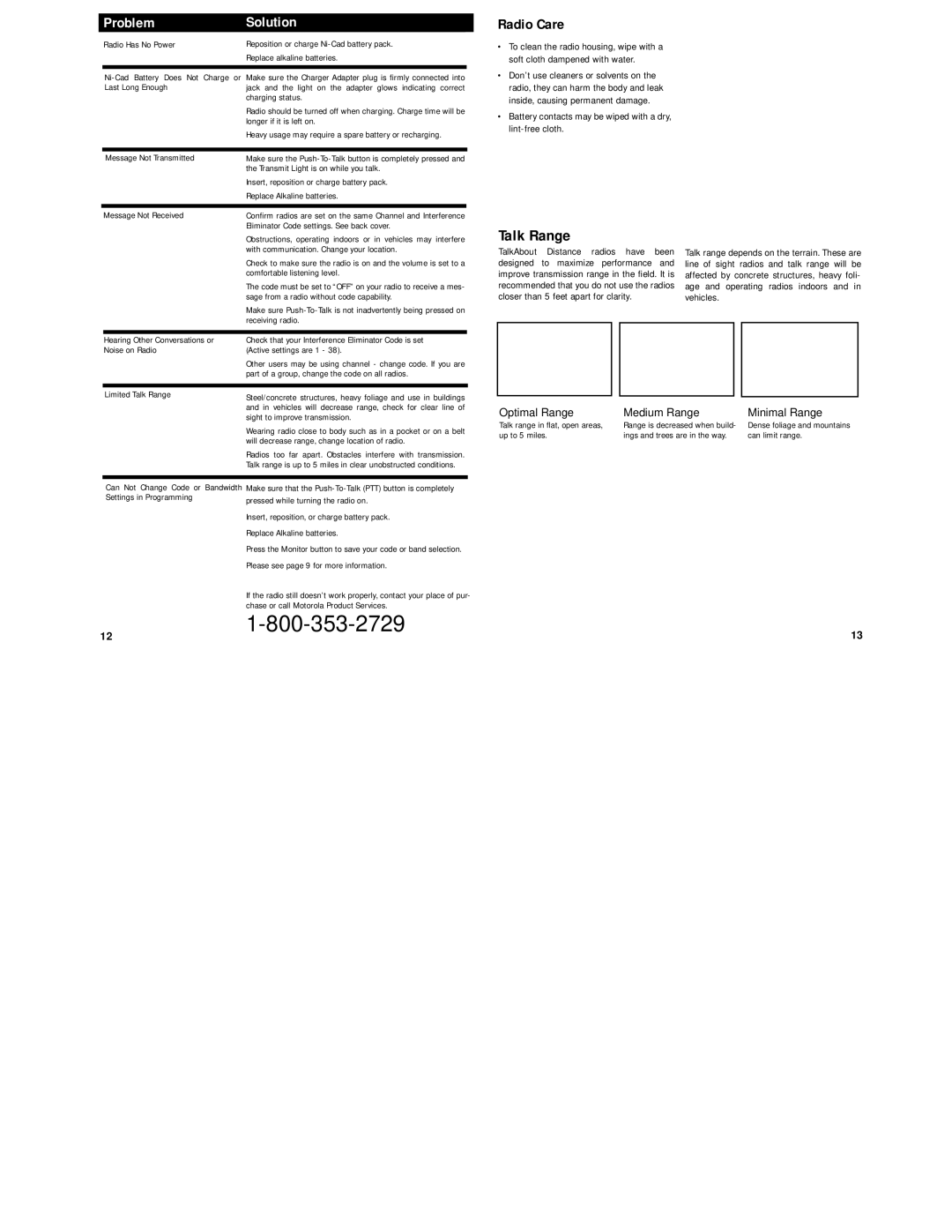DPS specifications
Motorola DPS, or Digital Public Safety, represents a significant advancement in communication technology tailored to meet the needs of first responders and public safety agencies. The system operates on a robust digital platform that enhances the clarity and reliability of voice communication, which is crucial during emergencies.One of the standout features of Motorola DPS is its interoperability. The system is designed to enable seamless communication across different agencies and organizations, ensuring that police, fire, and medical services can coordinate effectively during incidents. This is achieved through a variety of protocols and standards, allowing dispatchers and responders to share information in real-time, regardless of their communication devices.
The technology behind Motorola DPS incorporates advanced radio frequency (RF) systems that provide extensive coverage and improved signal strength. This is particularly important in urban environments where buildings and other structures can obstruct signals. The system often utilizes a combination of analog and digital signals to maintain uninterrupted communication, even in challenging conditions. Moreover, features such as push-to-talk (PTT) allow for instant communication, which can be a game-changer during critical situations.
Another key characteristic of Motorola DPS is its emphasis on security. The system integrates encryption technologies that protect voice and data communications from interception. This ensures that sensitive information remains confidential, which is essential for operational integrity and public trust.
Motorola DPS is also equipped with features like real-time location services (RTLS) and data analytics capabilities. These tools enable public safety officials to track resources, manage incidents more efficiently, and make data-driven decisions. The analytics component allows agencies to evaluate past incidents and improve future response strategies.
In addition, the system’s user-friendly interface simplifies training for new users. This ensures that all personnel can quickly learn to navigate the system and utilize its functions effectively. Furthermore, the scalability of Motorola DPS allows agencies to expand their communication capabilities as needed, accommodating future growth without significant disruption.
In conclusion, Motorola DPS embodies a comprehensive communication solution designed to enhance the effectiveness of public safety operations. With its emphasis on interoperability, security, and user-friendly design, it plays a pivotal role in modern emergency response efforts, ensuring that first responders can communicate clearly and effectively when every second counts.

